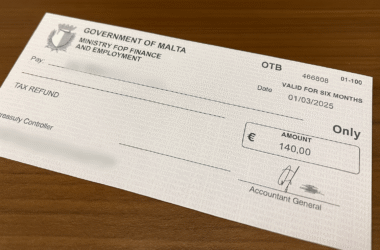Social security contributions are a crucial aspect of financial stability and support for individuals in Malta. It is important to understand your obligations and rights regarding these contributions.
Social Security Contributions are calculated at weekly rates, with each year of gainful employment accounting for 52 or 53 contributions (depending on the number of Mondays in that year) in the contributor’s record. Individuals can also request a Social Security Contributions History Sheet from the Department of Social Security. This sheet is categorised into Contributions and Credits Class.
These contributions entitle employees to a range of social security benefits, including healthcare, pensions, unemployment benefits, and other social support services.
Let’s delve into the intricacies of social security contributions in Malta for the calendar year 2025.
Table of Contents
Who Falls Under Insurable Employment
Under the Social Security Act, any contract of service or apprenticeship is classified as insurable employment. This includes employed persons (those with an employer) and self-occupied persons (those earning income from a trade or skill). All individuals over the age of 16 and below retirement age (65 years) engaged in insurable employment are required to pay social security contributions.
Additionally, certain cases allow individuals to be insured as self-employed persons, earning income from rent, interest, and investments.
Social Security Contributions in Malta for 2025: Detailed Overview
Having a clear understanding of social security contributions in Malta is essential for employees, self-occupied individuals and self-employed individuals. This guide explores Class 1, Class 2 and Class 3 contributions, highlighting their distinctions and purposes.
Class 1 Employed individuals
If you are employed but do not qualify under Part II of the First Schedule of the Social Security Act (Cap. 318), you must pay Class 1 Social Security Contributions. These contributions follow the rates outlined in Part I of the Tenth Schedule of the same Act.
Class 1 Contributions are divided into categories:
- Category A: For employees under 18 years of age.
- Categories B, C, and D: Determined by your income and year of birth.
If you work part-time for less than 8 hours per week with the same employer, you are not considered to have insurable employment for Social Security purposes. However, if your total annual earnings from employment exceed €910, you will need to pay self-occupied contributions instead.
Class 1 Social Security Contributions are deducted from employees’ wages, with employers matching the amount. The rate is based on the Basic Weekly Wage, excluding allowances, bonuses, and overtime.
Those with multiple part-time jobs can contribute for up to 40 hours weekly to qualify for a higher pension.
Class 2 Self-occupied individuals
A self-occupied individual is a person who is not in formal employment, and is exempt under Part II of the First Schedule of the Social Security Act (Cap. 318), and earns more than €910 annually through business or trade activities. Employees working less than 8 hours per week but earning more than €17.50 weekly or €910 annually are also classified as self-occupied for social security contribution purposes.
Class 2 Contributions are divided into categories SA, SB and SC depending on the income declared and the year of birth.
The Social Security Contribution rate for self-occupied persons is calculated based on net annual income from trade or profession earned during the previous calendar year. In the first year of business, they may pay the lowest Class 2 Rate SA, as income data from the prior year would not yet be available.
Self-occupied persons are required to pay Social Security Contributions to the Commissioner for Revenue every four months, specifically in April, August, and December.
If contributions are not paid on time, Article 116 of the Social Security Act permits self-occupied persons to settle arrears for up to five years, subject to a penalty of 1% per month on the unpaid amount from the due date to the date of payment.
For individuals born on or after 1 January 1962, Article 116 specifies that arrears for up to five years must be paid at the rate applicable at the time of payment.
Class 3 Self-employed individuals
A self-employed person is someone under the age of 65, ordinarily resident in Malta, who is neither employed nor self-occupied and whose income comes from rents, investments, capital gains, or similar sources.
Social Security Contributions for self-employed persons are classified as Class 2 Contributions. Unlike Class 2 Self-Occupied Contributions, which qualify for both pension and short-term benefits, Self-Employed Contributions only count towards pension eligibility. These are listed as Class 3 Contributions on the Social Security Contribution History Sheet.
The contribution rate is based on net annual income from rents, bank interest, or financial investments received in the previous calendar year. Rates are the same as for Self-Occupied persons, except for the Class 2 SP rate, which applies only to single individuals earning between €1,005 and €9,296 annually.
Eligibility to pay Self-Employed Contributions under the Social Security Act includes:
- Those who paid Class 2 Contributions before 4 January 2004
- Participants in government-approved early retirement schemes
- Single or legally separated individuals
- Those paying arrears via the Retrospective Scheme (Budget 2015)
- Those paying arrears via the Libya Scheme (Budget 2019)
Self-employed persons must pay their Social Security Contributions to the Commissioner for Revenue every four months: in April, August, and December.
Pro-Rata Social Security Contributions
Employees
Part-time employees earning less than the weekly National Minimum Wage may choose to pay their Social Security Contributions at a rate of 10% of their actual basic weekly wage instead of the standard Class 1 Category B rate, which is 10% of the National Minimum Wage.
This reduced rate is referred to as the Class 1 Pro-rata rate. However, the employer remains obligated to pay their full share of Class 1 Contributions. It is important to note that contributions paid at the pro-rata rate will not count as one full weekly contribution for record-keeping purposes but will carry a proportional weight based on the reduced rate.
Self-Occupied Persons
Part-time self-occupied individuals, including females, students, and pensioners, earning below the minimum income threshold for the Class 2 Rate SA may opt to pay Social Security Contributions at 15% of their basic weekly income instead of the standard Class 2 Rate SA.
This reduced rate is known as the Class 2 Pro-rata rate. Similar to employees, contributions paid at the pro-rata rate will not equate to a full weekly contribution in records but will carry a reduced proportional weight relative to the standard rate.
Key Differences and Purpose of Distinction
Class 1 (Employees and Employers):
- Who Pays: Contributions are shared between the employer and the employee.
- Purpose: This system ensures that social security contributions are distributed between employers and employees, promoting shared responsibility for social welfare.
Class 2 (Self-Employed):
- Who Pays: The individual alone is responsible for contributions.
- Purpose: This structure accommodates the variable income patterns of self-employed individuals, ensuring their contributions reflect actual earnings. The distinction also accounts for the lack of an employer to share the contribution burden.
Key Points to Remember
- Compliance: Both employees and self-employed individuals must ensure timely and accurate payment of contributions to avoid penalties.
- Records: Maintaining accurate income records and regular updates with the Social Security Department is crucial for compliance.
- Updates: Stay informed about any changes to contribution rates or regulations by regularly checking updates from Malta’s Social Security Department.
Practical Steps
- Verify Earnings: Ensure accurate reporting of your earnings to calculate the correct contribution amounts.
- Stay Informed: Regularly check for updates from the Social Security Department of Malta to stay compliant with the latest regulations.
By understanding these details, employees and self-employed individuals in Malta can navigate their social security obligations effectively, ensuring they receive the appropriate benefits and support.
In a Nutshell
Before paying social contributions in Malta, you should pay careful attention to regulatory requirements and which category you fall under. Knowing what you’re entitled to is the first step to making sure you and your family are financially secure in the future.







